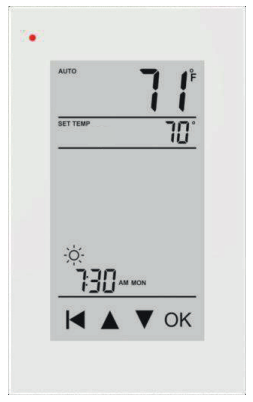

Program your thermostat efficiently to drastically reduce your energy bills and promote a more sustainable lifestyle. Imagine a home that automatically adjusts the temperature based on your schedule, ensuring you stay cozy without wasting energy. This article will guide you through the process of optimizing your thermostat for maximum efficiency, exploring various techniques and strategies to tailor your heating and cooling to your needs and save money in the long run. This comprehensive guide covers everything from understanding basic thermostat programming to exploring advanced features and smart home integration. We will cover various strategies, offering actionable steps and examples to help you achieve optimal energy savings.
Understanding Your Thermostat’s Programming Capabilities
Different Types of Thermostats
Different thermostats offer varying levels of programmability. Basic models often allow for setting a schedule for heating and cooling. More advanced models, like smart thermostats, provide a much wider range of options, such as integration with smart home systems and learning your preferences. Understanding the type of thermostat you own is the first step in optimizing its use.
Basic Programming:
Most thermostats allow you to set different temperatures for different times of the day or week. This is an essential step in optimizing your heating and cooling needs. Look for functions that let you adjust temperatures for weekdays, weekends, and even different seasons. This is often the easiest and most effective way to reduce energy waste.
Optimizing Your Schedule for Efficiency
Tailoring to Your Daily Routine
Consider how you use your home. For example, if you often leave your house in the morning for work, you can program the thermostat to lower the temperature before you leave and increase it again closer to your return time. This proactive approach ensures that energy isn’t wasted while you’re away.
Seasonal Adjustments:
Adjust your thermostat settings based on the season. In summer, you may want a slightly higher temperature setting during the day when you’re not home and a lower setting while you sleep. Conversely, in winter, a lower setting during the day and a slightly higher one during sleep can be beneficial.
Peak Demand Management
Analyze your energy bills to identify times of high energy costs. For example, if electricity costs are highest in the afternoon, program your thermostat to maintain a higher temperature during those hours. Some smart thermostats can detect peak demand in your area and automatically adjust.
Exploring Advanced Thermostat Features
Geofencing and Smart Home Integration
Smart thermostats can learn your routines and preferences and adjust the temperature automatically based on your location. Geofencing, for example, can adjust the temperature when you arrive or leave your home, ensuring you’re always comfortable and energy is used efficiently.
Remote Control and Monitoring
Many smart thermostats allow you to control your thermostat from anywhere using your smartphone or tablet. You can monitor energy usage and adjust settings remotely.
Implementing Energy-Saving Strategies
Insulation and Air Sealing
Improving your home’s insulation and sealing air leaks can reduce the amount of energy needed to maintain a comfortable temperature. Addressing these issues could improve the thermostat’s efficacy and lower your long-term energy bills.
HVAC Maintenance
Regular maintenance of your HVAC system is essential for optimal performance. A well-maintained system will use energy more efficiently, minimizing your energy consumption.
Measuring and Adjusting Your Energy Consumption
Monitor Your Bills
Regularly review your energy bills to identify patterns in your energy consumption. Do your energy costs spike during certain times of the year or day? Analyzing your bills will help you identify areas where you can adjust your programming for maximum efficiency.
Experiment and Adapt
Don’t be afraid to experiment with different settings and schedules to find the optimal configuration for your home and lifestyle. Adjust the thermostat to find the sweet spot, testing different temperatures and programs until you find what works best for you.
Exploring Additional Tips
Understanding Your Local Climate
Take your location into account. Different regions have varying climates, requiring different approaches to thermostat programming. Areas with extremely hot or cold climates will have unique needs.
Home Design and Building Materials
Consider your home’s design and construction materials. Homes with better insulation may require less frequent adjustments, while older homes or those with poor insulation might need more frequent adjustments.
Frequently Asked Questions
How do I choose the right thermostat for my needs?
Consider the features of different models. Basic models may suffice if you don’t need advanced functionalities like smart home integration or geofencing. Smart thermostats can automatically optimize energy use based on your location and daily routine. Assess your budget and prioritize features that align with your needs.
What are some long-term benefits of programming my thermostat?
Regularly programming your thermostat for efficiency can lead to significant savings on your energy bills, promoting a more sustainable lifestyle. Reducing energy consumption will help lower your environmental impact, saving you money and contributing to a greener future.
In conclusion, optimizing your thermostat for efficiency is a significant step towards reducing energy bills and promoting a more sustainable lifestyle. By understanding the nuances of programming your thermostat, you can tailor its operation to match your daily routines and optimize heating and cooling for maximum comfort and minimal waste. Remember to regularly evaluate your energy consumption and adjust your settings as needed. For more detailed guidance on programmable thermostats and energy-saving tips, consult trusted resources and consider consulting with a home energy expert. To get started, explore the many energy-efficient thermostat options available and consider the long-term benefits of your investment.